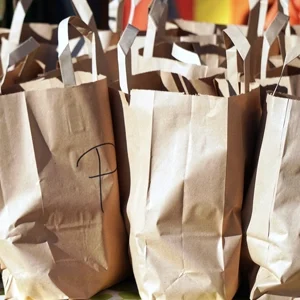This technology giant’s strategy is possibly based partly on the growing post-pandemic inflation that causes the rise in prices in all supply chains since lock-down, especially food, which showed its deficiencies in the worst moments of the pandemic. COVID-19 crisis with massive panic purchases in different countries creating shortages and insufficiency to acquire new foods, and subsequent international conflicts that keep capital markets around the world uncertain.
But who is benefiting from international economic crises? In the opinion of the experts, pharmaceutical companies first place in the post-pandemic period. Still, in second place, the global department stores have shown a sustained growth of 11% to 15% per year during the last two years, even in the worst moments of the pandemic. The Health crisis and the war recently focused its strategies on generating its brands of food, hygiene, and cleaning products necessary for daily life, such as Great Value from Walmart, Quality Day, Valley Foods, Golden Hills, and Precissimo in Mexico and Latin America.
Global department stores help consume their products such as cereals and cleaning supplies, selling them between 10% and 25% cheaper than similar products of other brands manufactured by their suppliers displayed in their stores, attempting against antitrust practices.
Due to the post-pandemic global economy changes, local food chain suppliers and retailers will be acquiring or converting to a manufacturer by international department stores. No one can directly compete with these mega-stores offering lower prices for their products.
The Own-brand products to consumers, in better display locations, in addition to the fact that these suppliers suggested by the store’s policies to pay the floor plan, product losses, merchandise theft, insurance, and bonds.
They must use financing with the department store itself for selling its products there on credit from 30 to 90 days after the merchandise is delivered because third-party factoring is not allowed or restricted in LATAM stores.
These practices mean that the chain of food and essential consumer goods is lifting in the hands of these global brands that know how to bear the financial burden through very cheap corporate credits.
Especially in countries where economies are growing slowly, and financial markets like Mexico or LATAM.
The problem will be in the future for local and domestic economies to have less supply of some primary products, leading us to fall again in inflation due to the laws of supply and demand.


